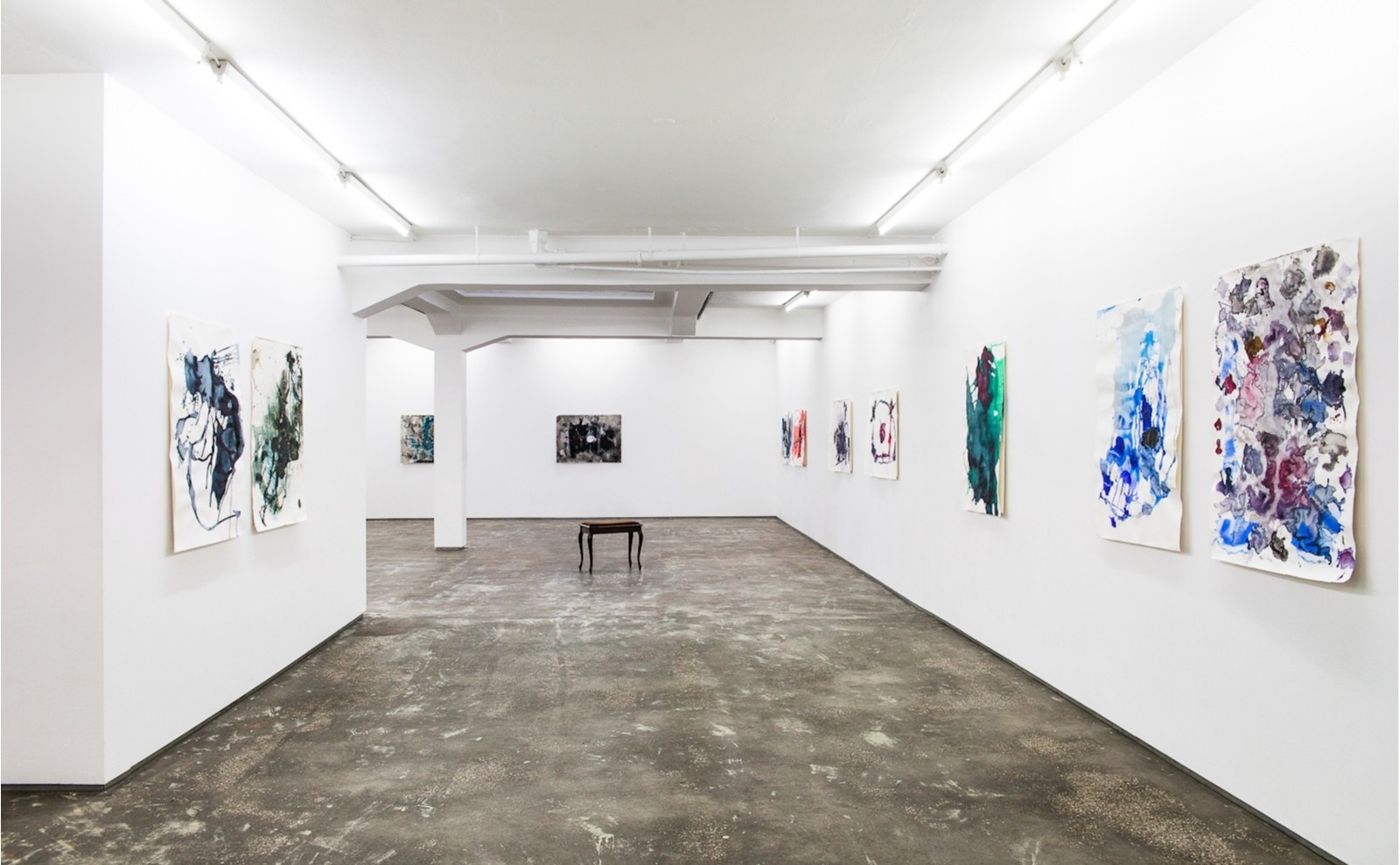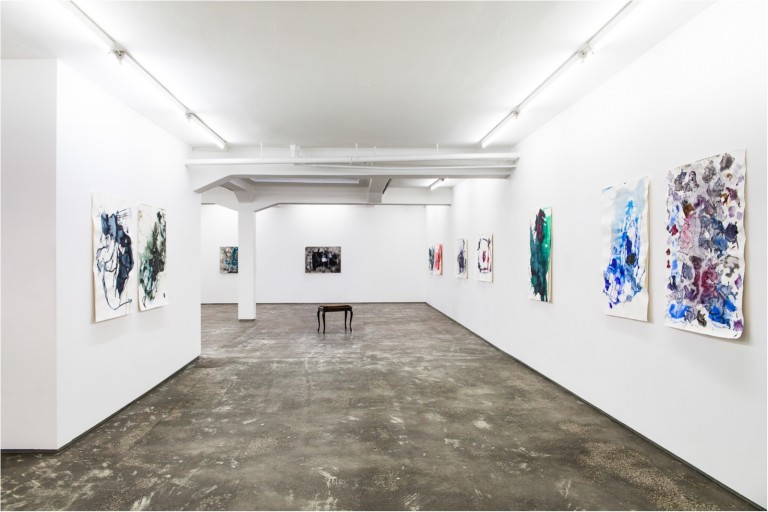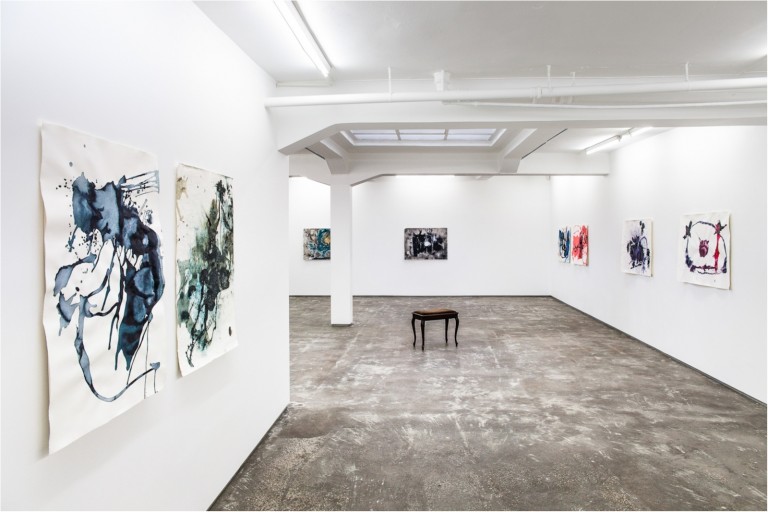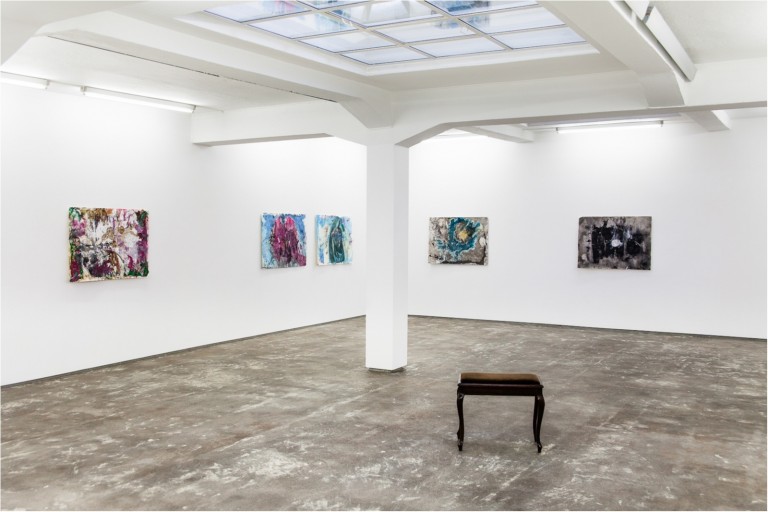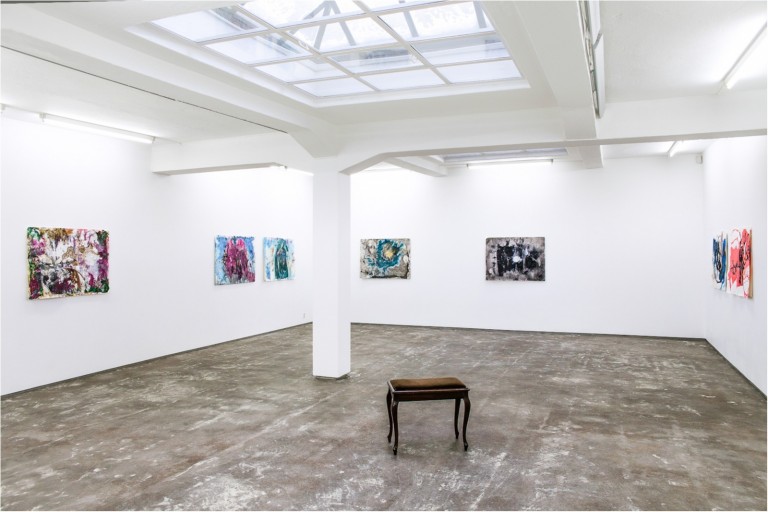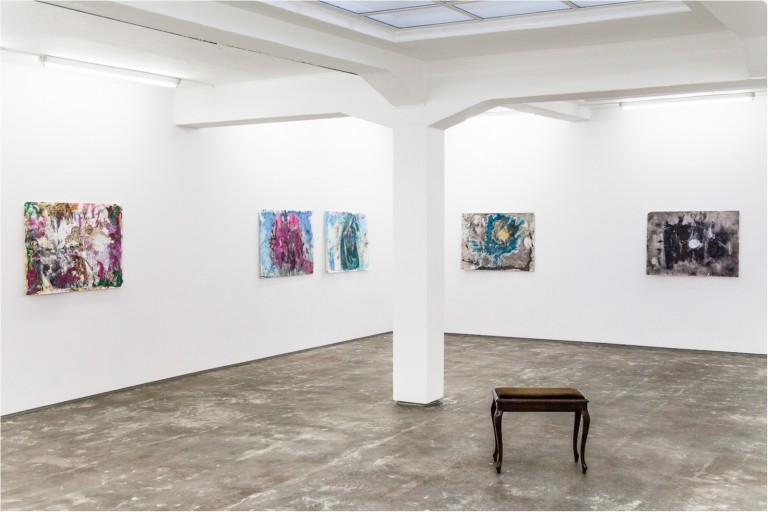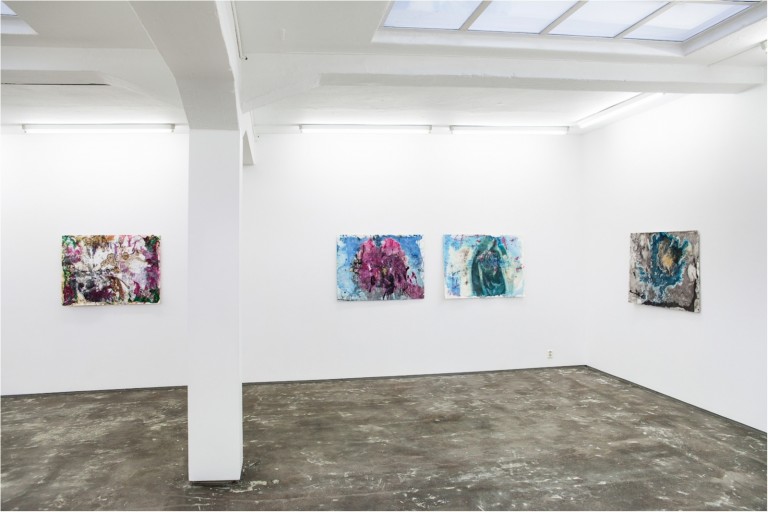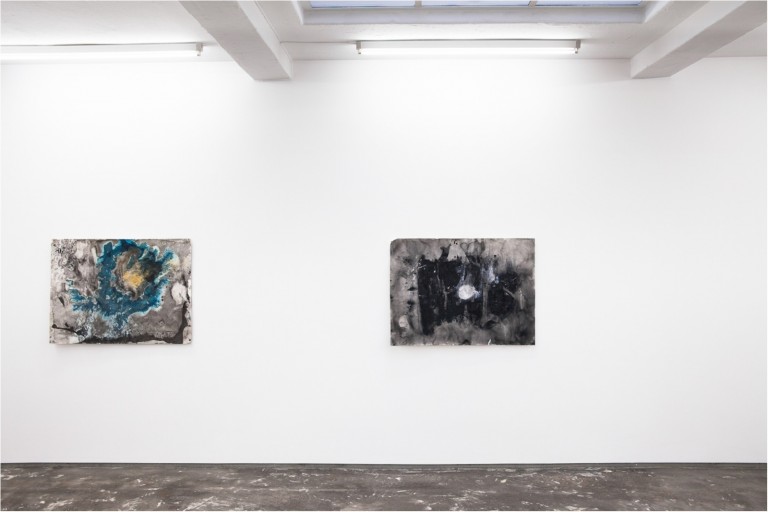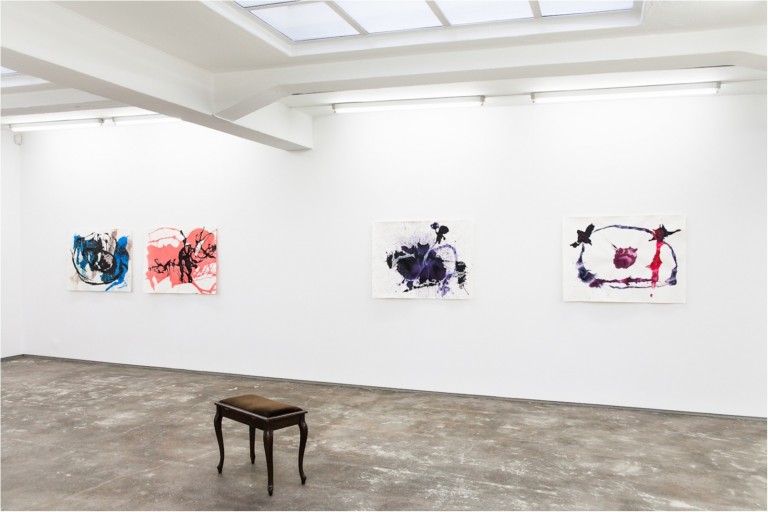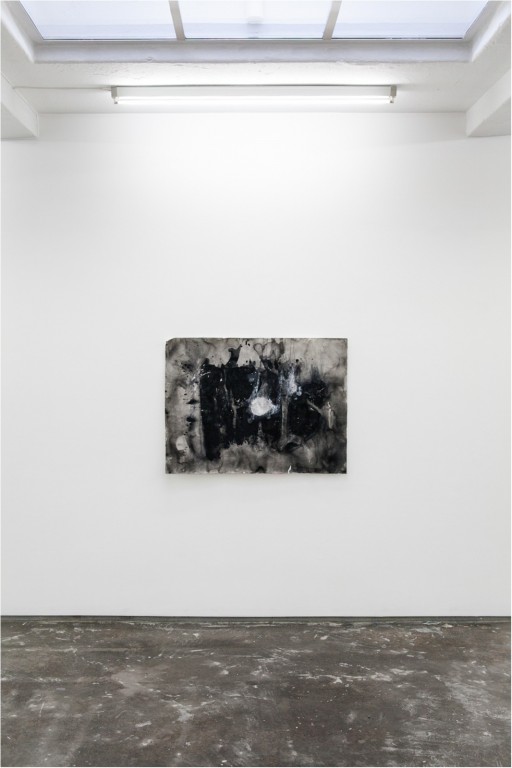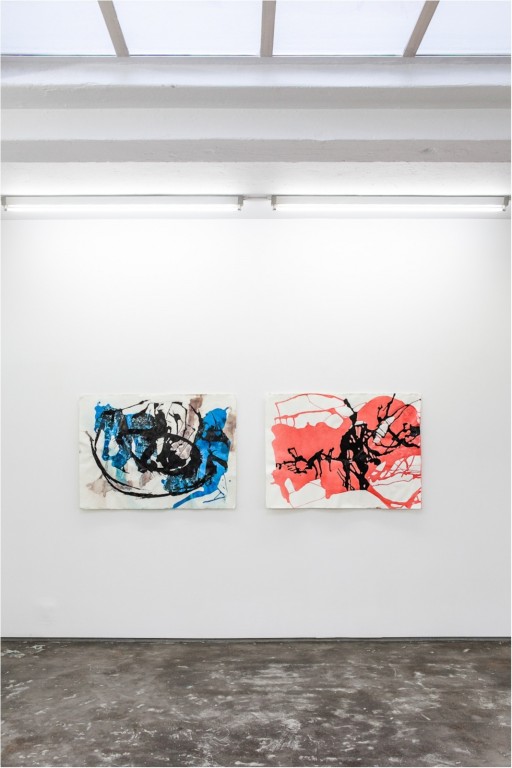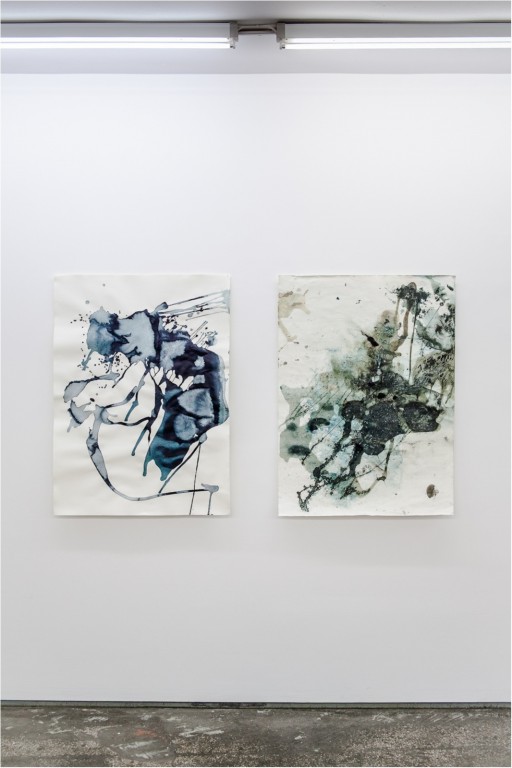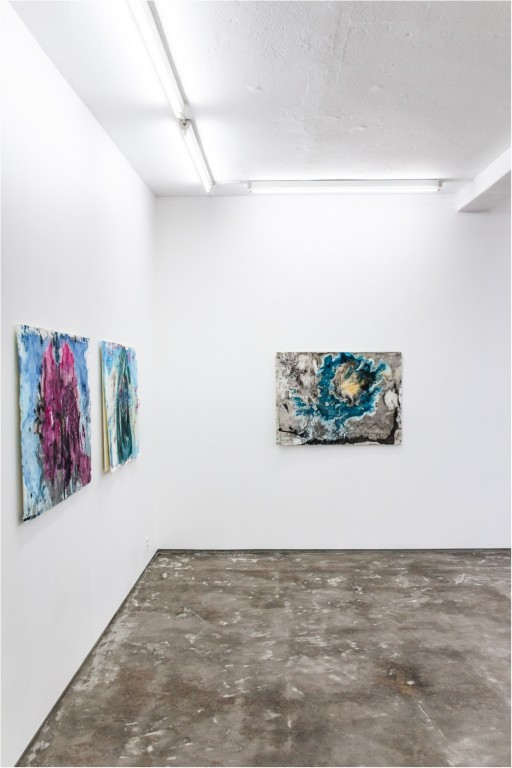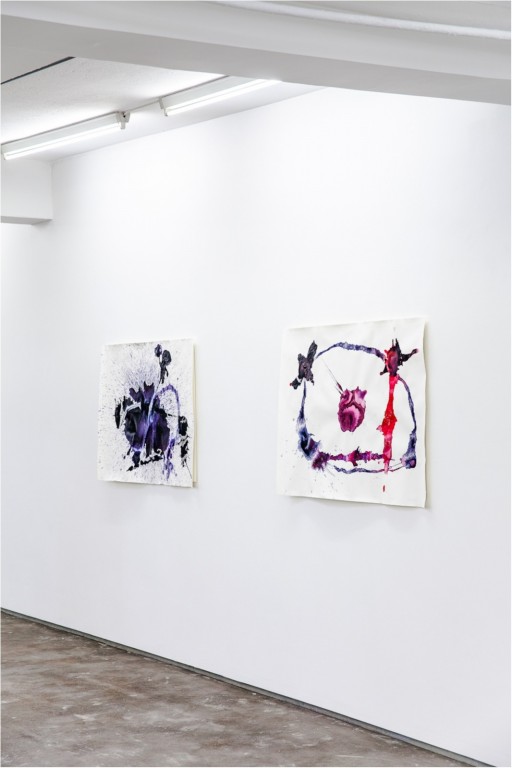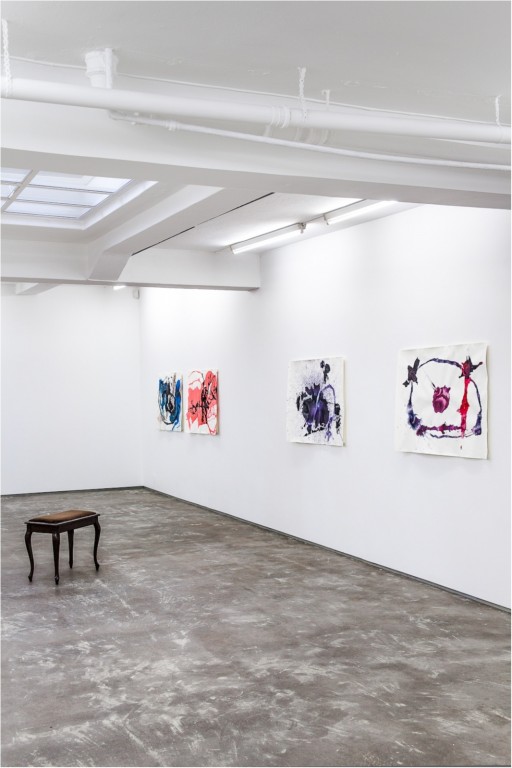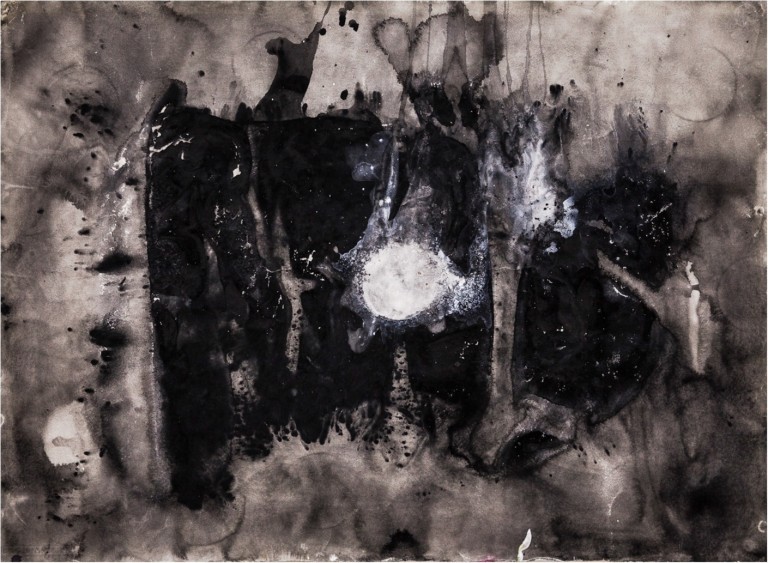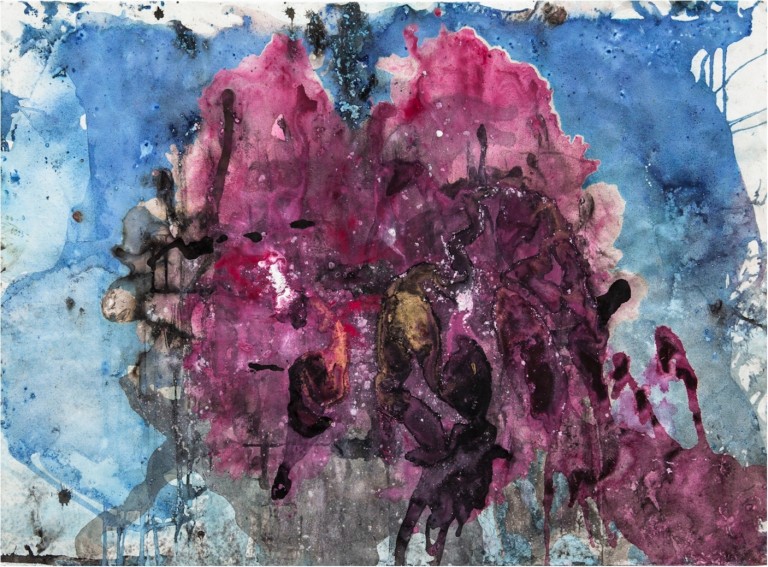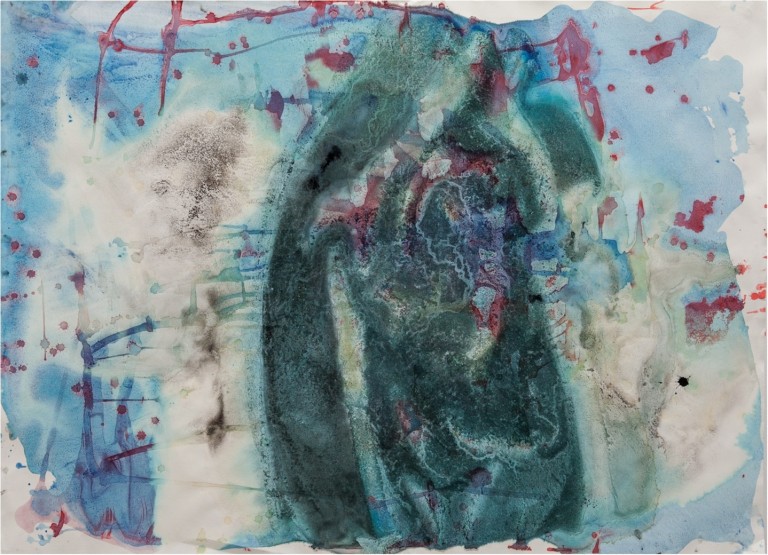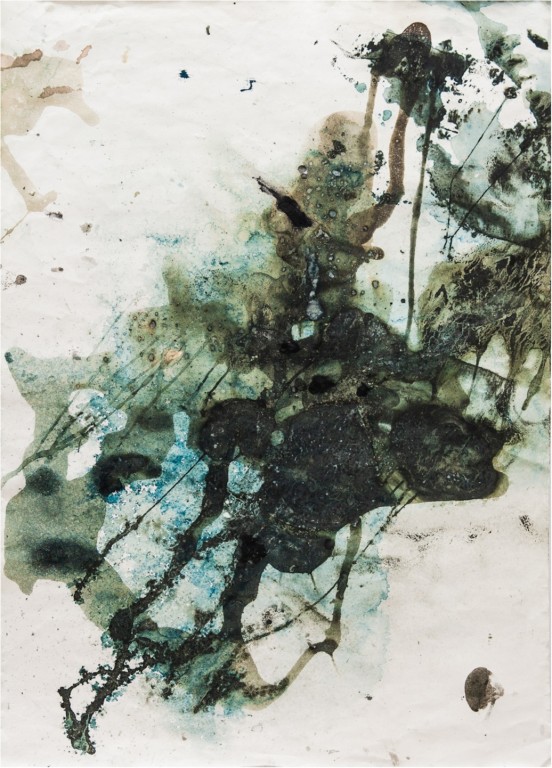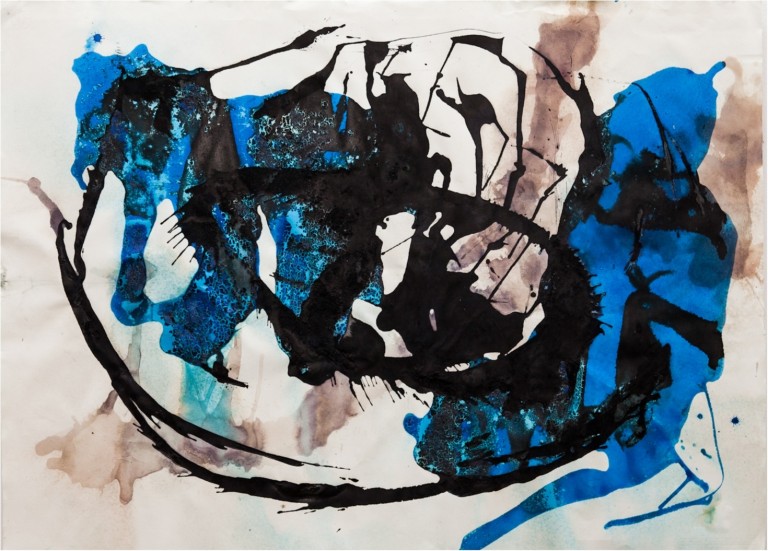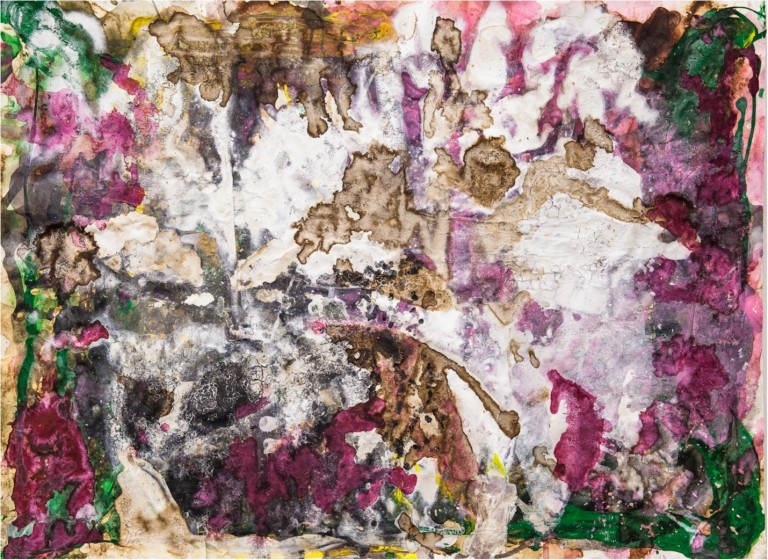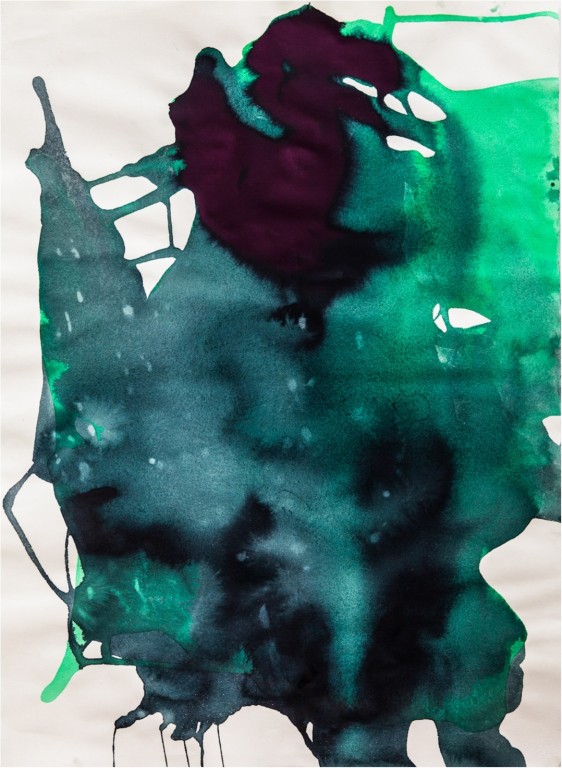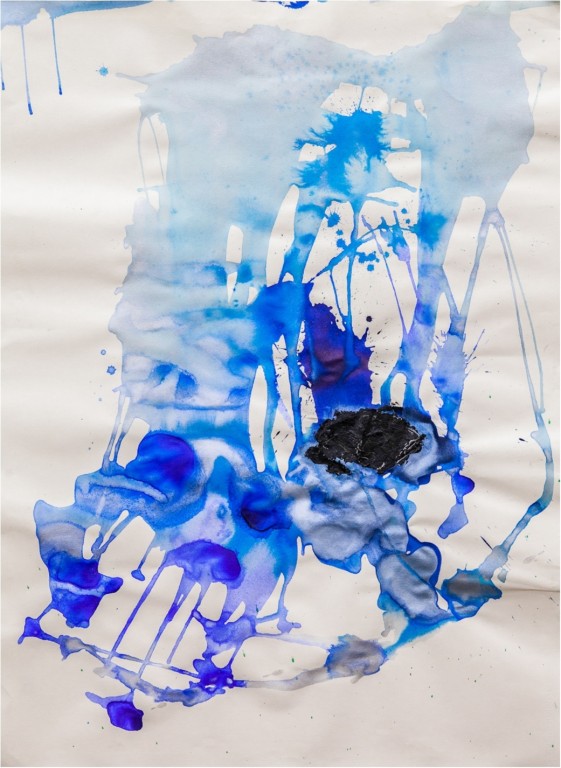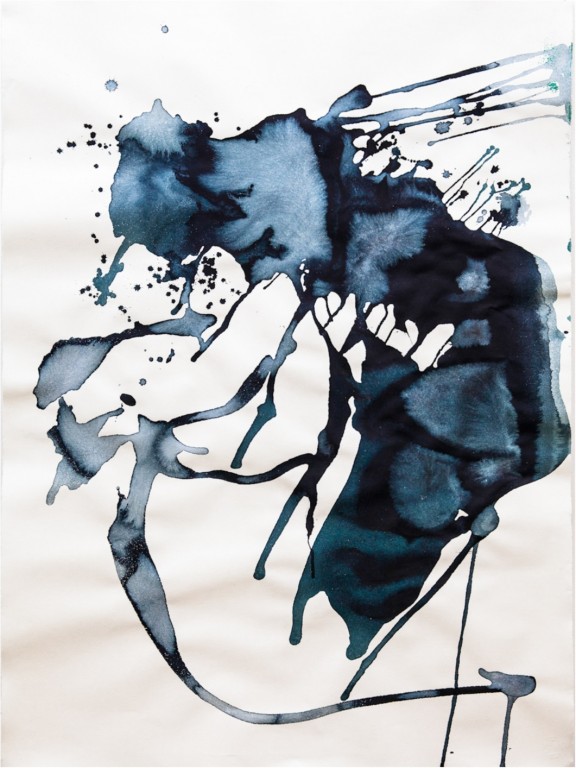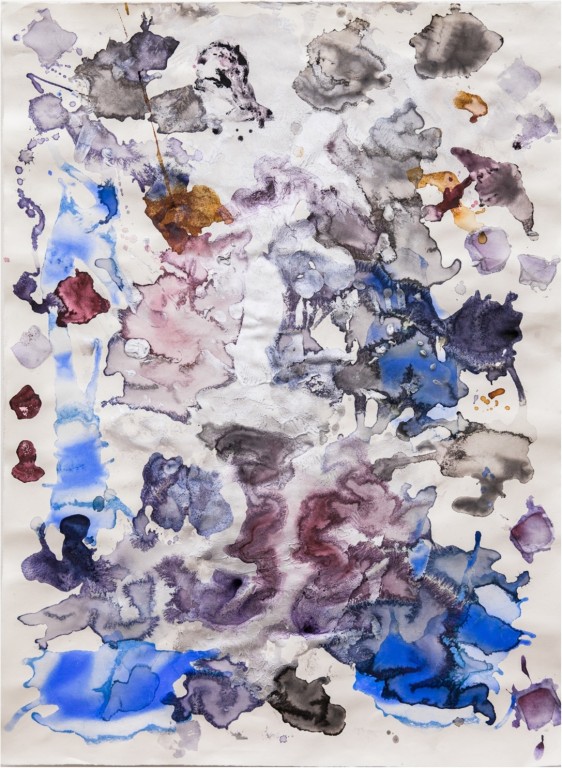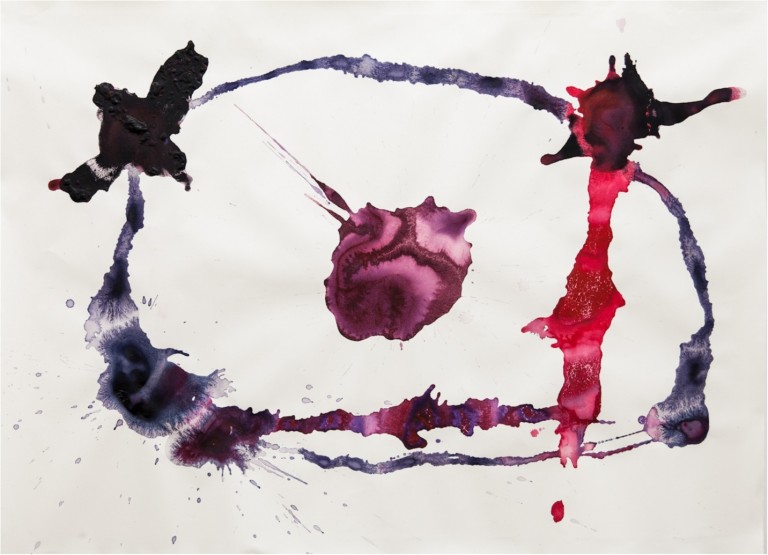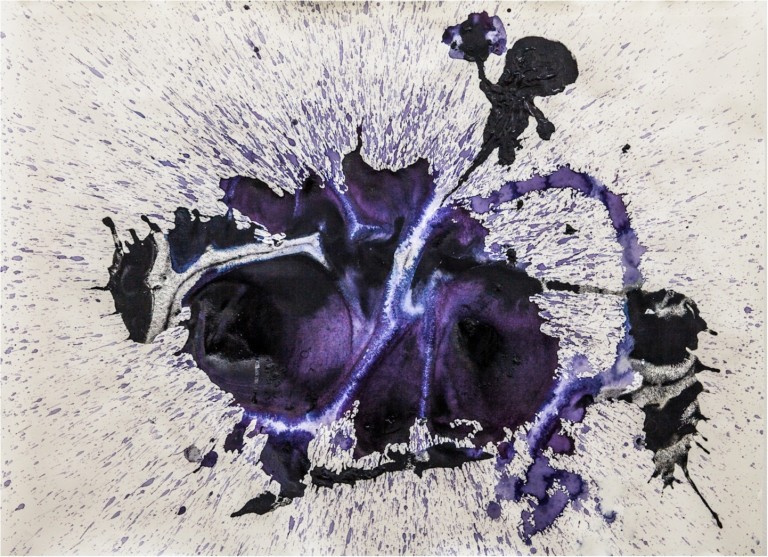Sgt. Welsh: In this world a man himself is nothing. And there ain't no world but this one.
Private Witt: You're wrong there. I seen another world. Sometimes I think it was just my imagination.
Sgt. Welsh: Well, then you've seen things I never will.
The Thin Red Line, Terrence Malick, 1998
OSL contemporary is proud to present the exhibition Avid Aberrations, with new works by Kristian Skylstad. The show comprises 15 unframed paintings (78,5 x 107 cm) in which ink has been poured, dripped, splashed and sprayed onto floor-splayed 150 grams paper.
Attempting to minimize control over the visual outcome, working without tools or organizing principles, Skylstad has allowed the liquid to blend and mould freely, initiating movement only by tilting the sheets as they crumble and fold with humidity. In pursuit of the "naive" and coincidental, works have been left outdoors and exposed to various household liquids like tea and red wine. Some are created in darkness. The pieces are thus founded largely on a flow of intuitive actions and accidents, anticipating a moment of balance between method and perception in which something emerges in the ink. The association commands the title, and the work "happens". This moment has occurred at varying degrees of treatment, leaving some sheets with sheer nuances and bold graphic outlines, while others are completely covered in layers of amalgamated colour and form.
An aberration denotes a departure from what is normal, usual, or expected. It is used to describe divergence and abnormality in a wide range of fields, including lapses in mental control and imperfections in optical phenomenon caused by physical defects in the camera lens or eye. Skylstad's method could be described as an attempt to construct such deviation from cognitive constraint, by permitting chance to prevail over preconceived visions – and so to arrive within the unexpected. The endeavour explores the relationship between visual representations and an imperceptible imaginary world, as this relates to both to the potential of painting as a source and conveyer of mental imagery, and to the abilities and confines of our perceptive capacities.
In The Doors of Perception (1954), Aldous Huxley details his perceptive experience when administered the narcotic substance mescaline in a psychiatric experiment. Astounded by the sudden capacity for a "purely aesthetic" vision of reality, he provides an elaborate contemplation over the confines of our perceptive faculties. While "at ordinary times" the eye concerns itself primarily with practical, temporal and spatial categories, in the mescaline experience: "The mind was primarily concerned not with measures and locations but with being and meaning….
"my watch, I knew, was in another universe, my actual experience had been, was still, of an indefinite duration, or alternatively of a perpetual presence made up of one continually changing apocalypse."
Quoting Henri Bergson, Huxley is making the point that conscious perception exhibits a “necessary poverty” since our brain effectively represses that which is not deemed relevant. The "qualitative multiplicity" of all immediate data present to us at any time, cannot be adequately represented by symbols. It is inexpressible. Thus, convenient for all practical purposes, we have refined the concept of symbols and languages, and we have done so to the point where systematic expectation often defines what we see. The exception seems to exist in the glitches of conscious control. As demonstrated under the influence of drugs, in dreams, hallucinations and mental lapses, deviations from this pragmatic method of perception occur, -where concepts like time and location, logic and relevance, self and other cease to appear as the absolute facts of this world.
From his experiments Skylstad derives apparently abstract forms and names them descriptively. As such he is implicitly questioning the juxtaposition of a number of standard dichotomies, notably that of creator-creation, reality-fiction, perception-matter, normalcy deviance, representation-abstraction. The evocative titles facilitate detection of comprehensible figures in the paintings. However, there is no obvious interpretation available, and what is observed in the graphic outlines of Waves (Escapist) or the dense pictorial landscape of Waves (Phantasmogoria) will largely depend on the spectator's personal history, internalized concepts and visual memory bank. At the level of reception the project illustrates how our perceptive apparatus works to place the unknown within known categories. It also implies that any "other world" (material or mental) may be perceived only at personal level, since its representation is always partly created in the eyes and mind of the beholder. When considering then, what these "aberrations" might disclose, one hardly escapes the reference to Rorschach and similar projective psychological tests, where individual interpretation is believed to reveal little about the ink-blot and a lot about the viewer.
Kristian Skylstad (b.1982) comprises photography, video, installation, conceptual assemblages, fiction writing and poetry. He is also active as a critic and gallerist, and has directed two artist run spaces in Oslo (TAFKAG and NoPlace.) His individual and collaborative projects have been shown at the Astrup Fearnley Museum (Oslo), MOMA (Moscow), Kalmar Kunstmuseum, Armory Show (NYC) and ISCP (NYC), and at a wide range of artist run venues like REKORD (Oslo), Dortmund Bodega (Oslo), KURANT (Tromsø) and Gallery D.O.R. (Brussel).
Kristian Skylstad (b.1982) comprises photography, video, installation, conceptual assemblages, fiction writing and poetry. He is also active as a critic and gallerist, and has directed two artist run spaces in Oslo (TAFKAG and NoPlace.) His individual and collaborative projects have been shown at the Astrup Fearnley Museum (Oslo), MOMA (Moscow), Kalmar Kunstmuseum, Armory Show (NYC) and ISCP (NYC), and at a wide range of artist run venues like REKORD (Oslo), Dortmund Bodega (Oslo), KURANT (Tromsø) and Gallery D.O.R. (Brussel).
